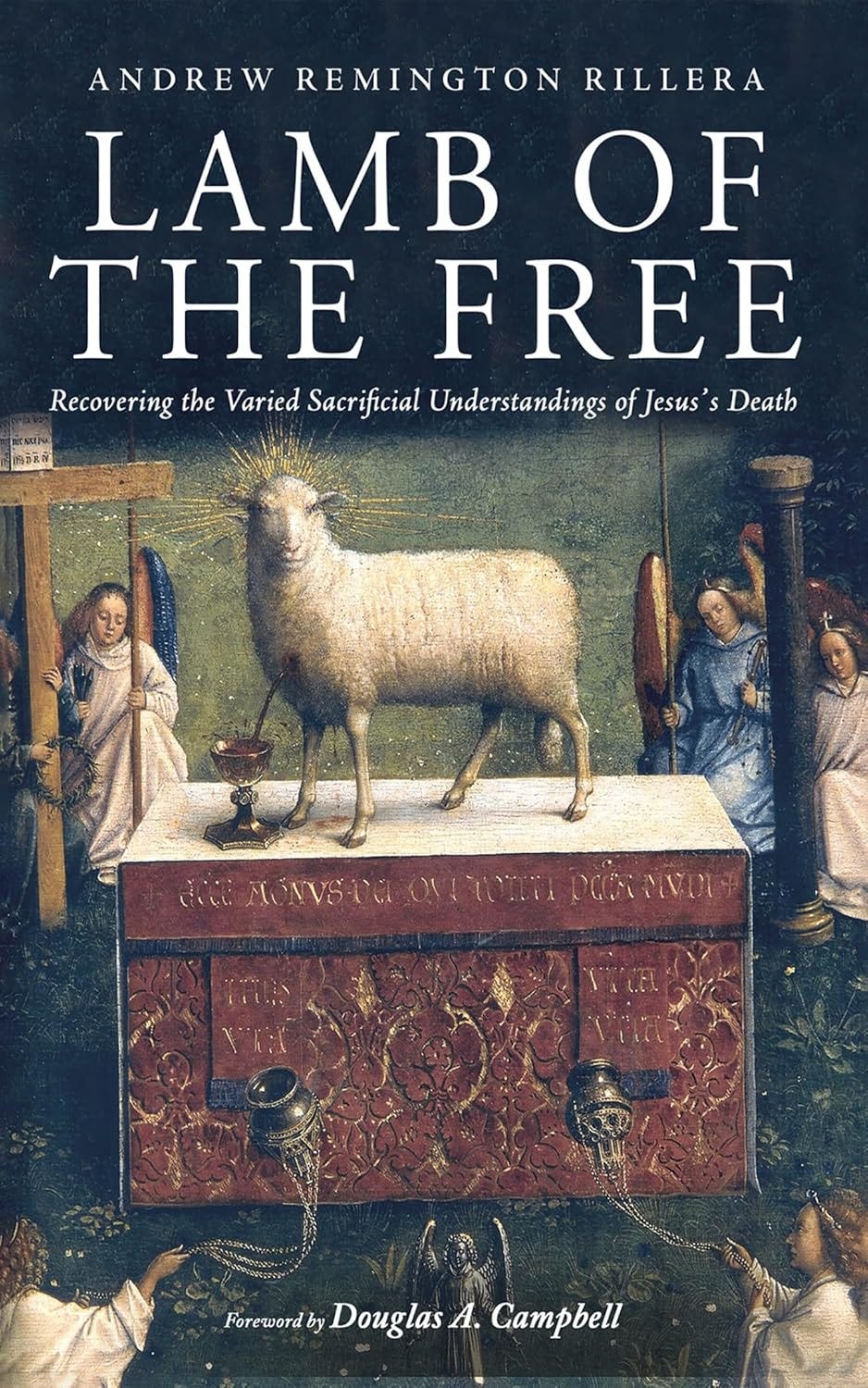Dr. Andrew Remington Rillera on the Old Testament Sacrificial System in his book, "Lamb of the Free".
Dr. Rillera is a professor of Biblical Studies/Theology at The King's University in Edmonton, Alberta, Canada.
I’m currently reading this book [link to purchase below] and thought the below excerpts from the first two (2) chapters to be very interesting and provocative:
“… sacrifice… is separated from the notion of “suffering.” As David Moffitt explains,
“To maltreat a sacrificial animal would be to render it ineligible to be offered to God, since a sacrificial victim that suffered physical damage from abuse would no longer be ἄμωμος (‘without blemish’).” Hence, the “attempt to read suffering and the centrality of death back into Jewish sacrifice leads to all manner of misunderstanding about sacrifice as Leviticus portrays it.”
Sacrificial slaughter was meant to be painless, quick, and humane by means of a swift cut to the throat… every effort is made to preclude suffering taking place... So, as Moffitt highlights, in the Torah “there is no hint that the animal is made to suffer, nor that the victim is an object of abuse or wrath. Inflicting suffering on the sacrificial victim is not a part of the biblical sacrificial system.”
This is significant because we can now see that when it comes to sacrificial understandings of Jesus’s death in the NT, these never occur in the context of Jesus’s sufferings and passion. Put another way: when Jesus’s sufferings and/or death qua death are the topic, then sacrificial metaphors are avoided…
Leviticus 17:3–5 says that killing and eating a domesticated animal [including oxen, lambs, goats] is considered killing/murder and thus incurs bloodguilt upon the person. The only way for this not to be killing/murder is if the animal is sacrificed at the dwelling place and its blood is placed in some fashion in relation to the altar. This transforms the death of the animal into a sacrifice and thus the offerer is not guilty of bloodshed…
… the Torah does not give the death of the animal itself ANY ritual or theological significance. And this all thereby proves that there simply is no warrant for the view that the sacrifice is standing in for the death of someone who is ostensibly worthy of death… there is no sacrifice (not even the Day of Atonement) that can be made to substitute for when someone is to be put to death or “cut off.”
Any way we come at this, the Levitical sacrificial system was not about substituting for someone who was supposed to be put to death (let alone substituting for someone else’s deserved suffering)…
It is all too common to think that there is only one purpose for Levitical sacrifice; namely, to atone…
(1) Not all sacrifices have an atoning function. There are non-atoning sacrifices that have separate rationales and functions. These are most of the burnt offerings and all of the well-being offerings.
(2) The purpose of the regular burnt offerings is “divine attraction” or “invitation.”
(3) The purpose of the well-being offerings is sacred feasting between God and people.
(4) The Passover is neither about atonement nor substitutionary death. Rather, it is a non-atoning well-being sacrifice commemorating God’s past act of deliverance. More specifically, it is most like the “thanksgiving” well-being sacrifice…
… the [common] assumption that sacrifice always has an “atoning function” is not only inaccurate, but this misconception has also prevented NT scholars from noticing one of the most obvious and significant observations when it comes to comprehending the sacrificial understandings of Jesus: the earliest NT texts associate Jesus with the non-atoning sacrifices. These non-atoning sacrifices are also the most prevalent ones linked to Jesus’s death across the NT. These non-atoning sacrifices are a covenant-inaugurating sacrifice and the Passover.
Conveniently, it is straightforward to recognize if a sacrifice is atoning or non-atoning: if the laity eat from it, then it cannot be an atoning sacrifice. This is how we know, for example, that the Passover is a type of communal well-being sacrifice since it is eaten by the laity. This is why these sacrifices are sometimes translated as “fellowship” or “communion” offerings, since these are a way for the worshiper to commune or have fellowship with God at the sanctuary.
I will discuss the purpose and function of atonement in chapter 4, but what is crucial for now is that if a sacrifice has an atoning function, then the laity never eat from it… Basically, the sinner (priest or lay) cannot receive a tangible benefit (i.e., the meat) from a sacrifice whose purpose is to purge the sanctuary from their own sin-contamination…
Now, keeping the larger aim of understanding how the NT authors make use of OT sacrificial imagery and to comprehend various meaning of Jesus’s death, it needs to be appreciated that the only sacrificial interpretation of Jesus’s death that claims to go back to Jesus, is his words at his last Passover. Jesus tethers it both to the non-atoning communal celebrations of Passover and the covenant inauguration by quoting or alluding to Exod 24:8 (“the blood of the covenant”) (Matt 26:26–29; Mark 14:22–25; Luke 22:15–20; 1 Cor 11:23–26). And King Hezekiah already set the precedent for bringing these two celebrations—Passover and covenant renewal—together (2 Chr 29:30—30:27)…
… the fact that both the Passover and the covenant-inauguration sacrifice having nothing to do with atonement and so are communal sacrificial meals needs to be appreciated. The very act of eating these is a major hurdle for anyone who thinks “atonement” is part of the Lord’s Supper…
To be sure, although I will defend the view that the Lord’s Supper has no atoning significance, Jesus is linked with sacrificial atonement in a few other places in the NT.”
Purchase the book here:
https://www.amazon.com/Lamb-Free-Recovering-Sacrificial-Understandings/dp/1666703044




